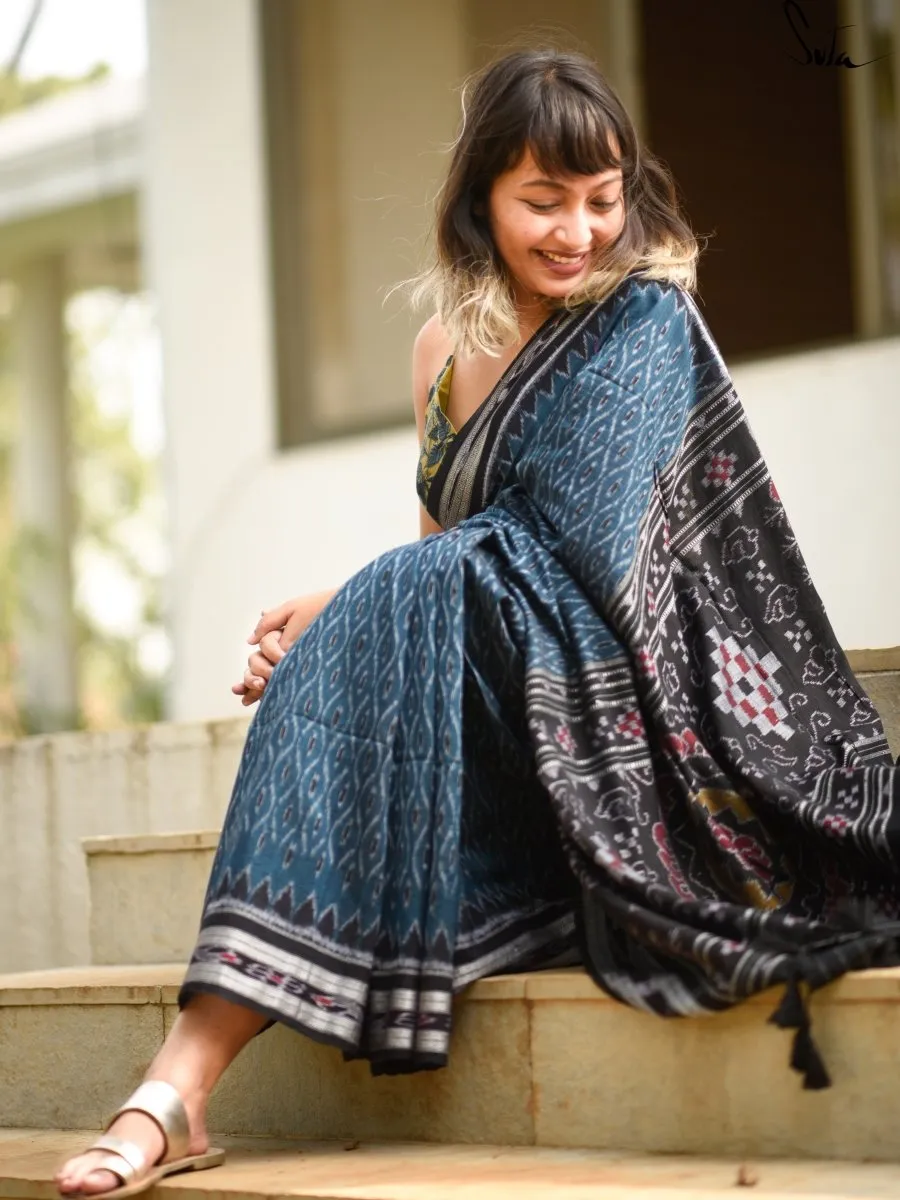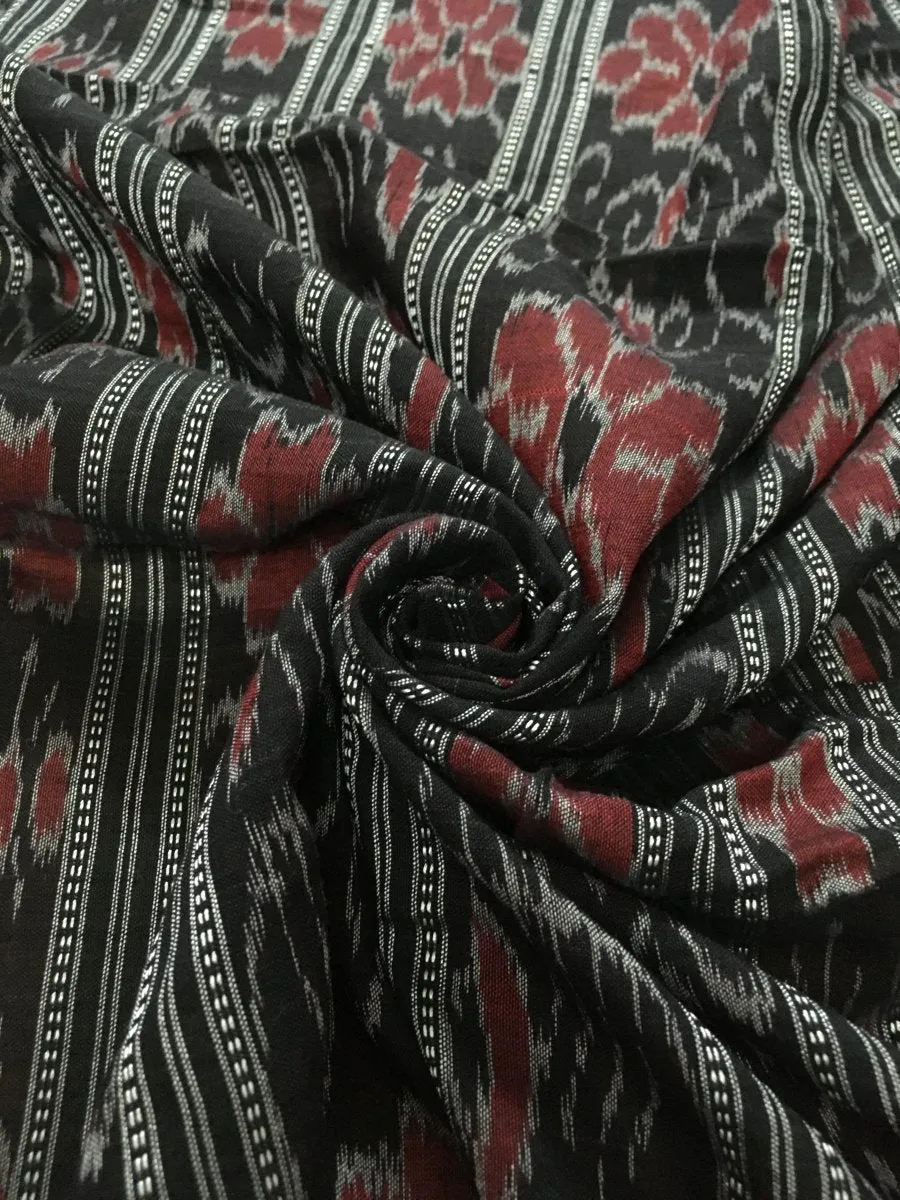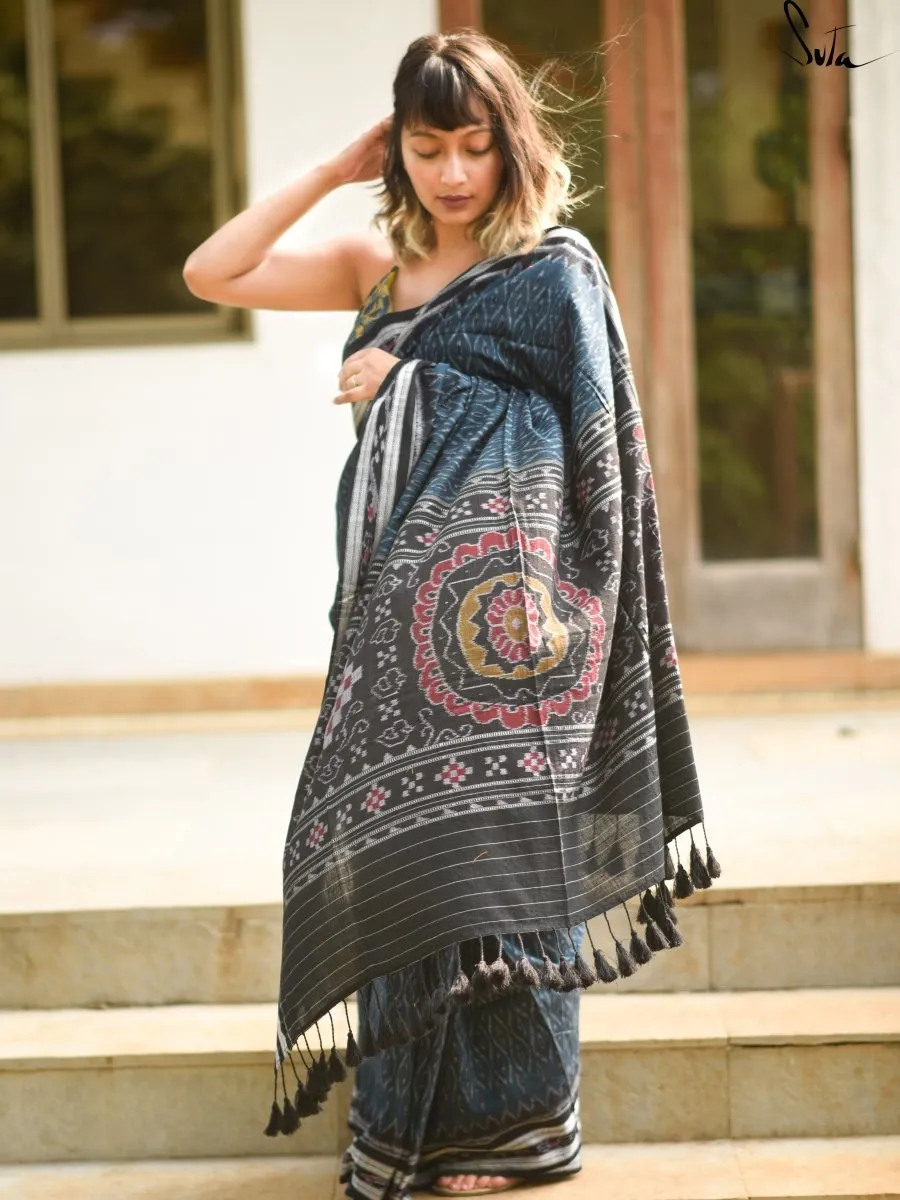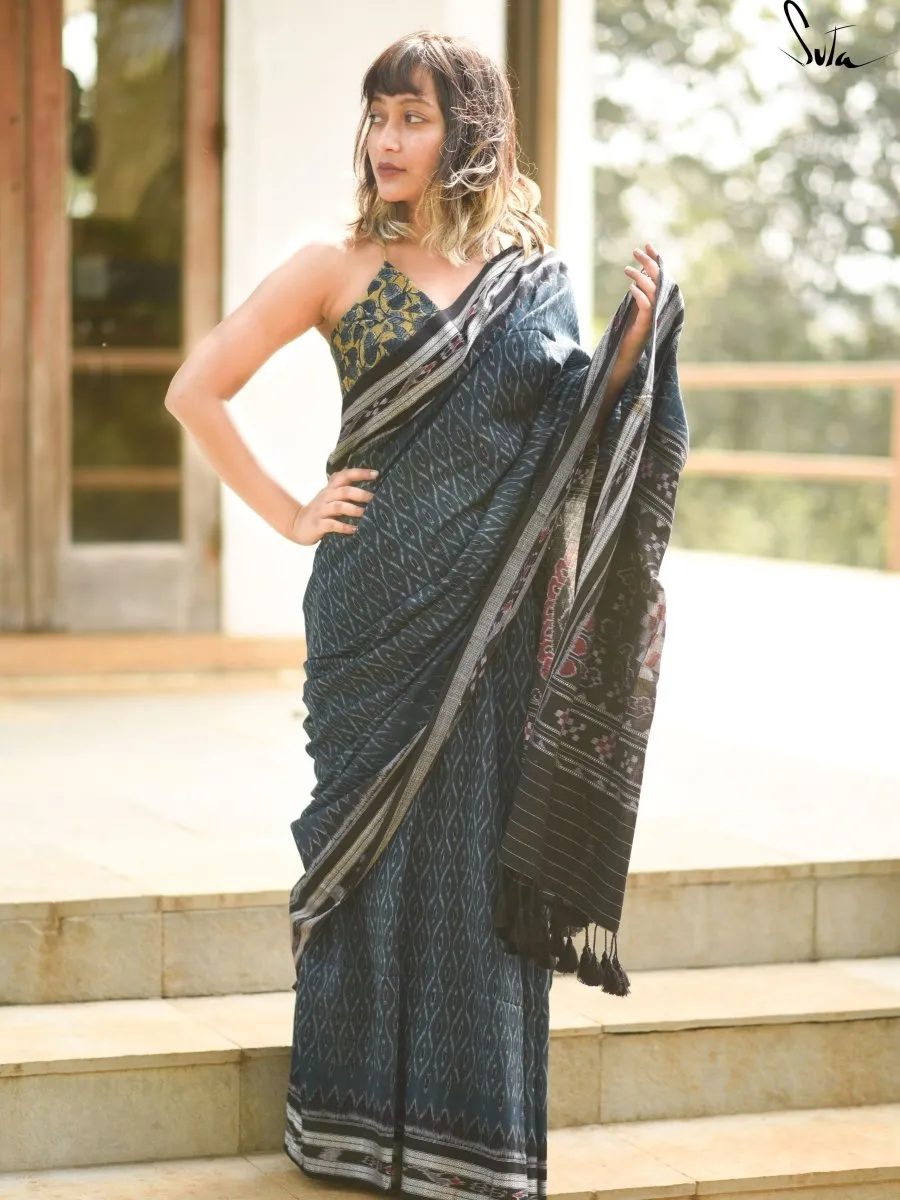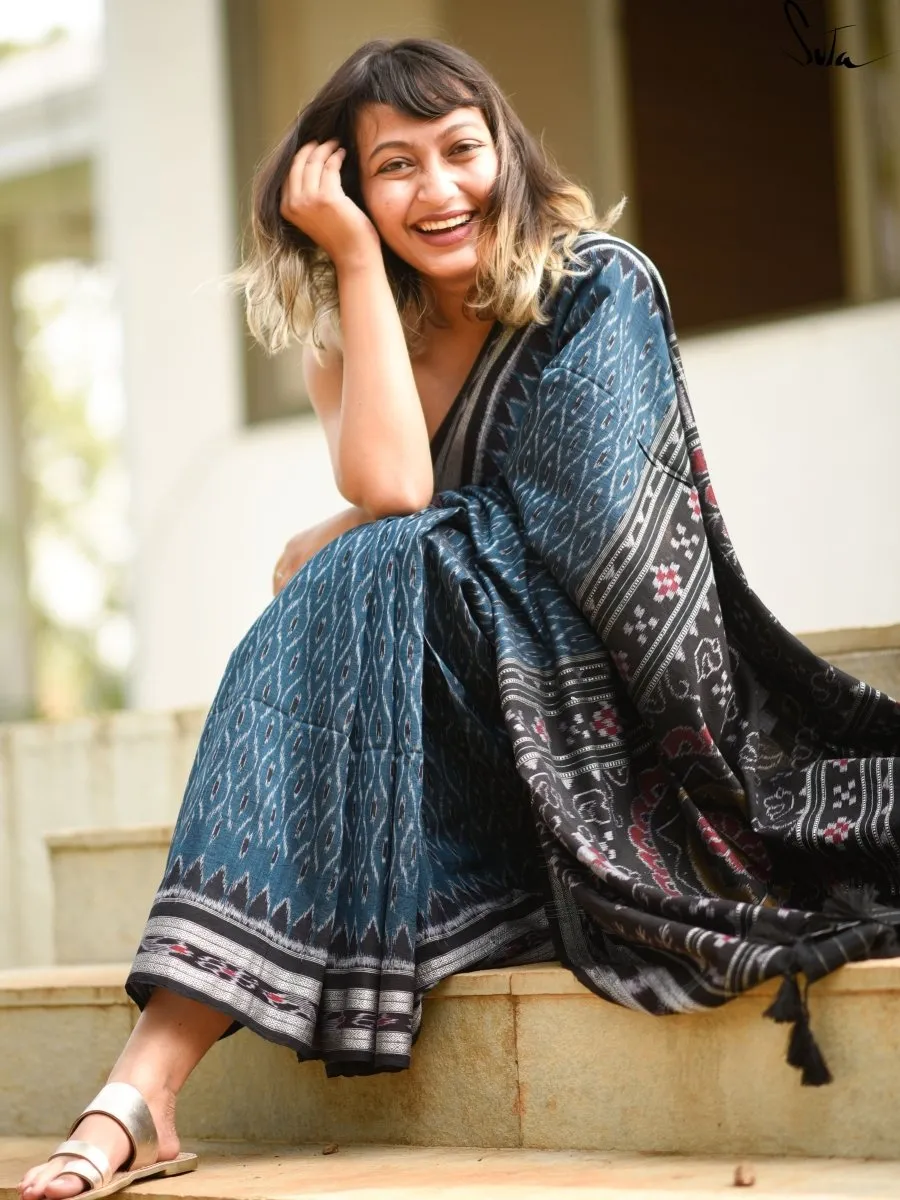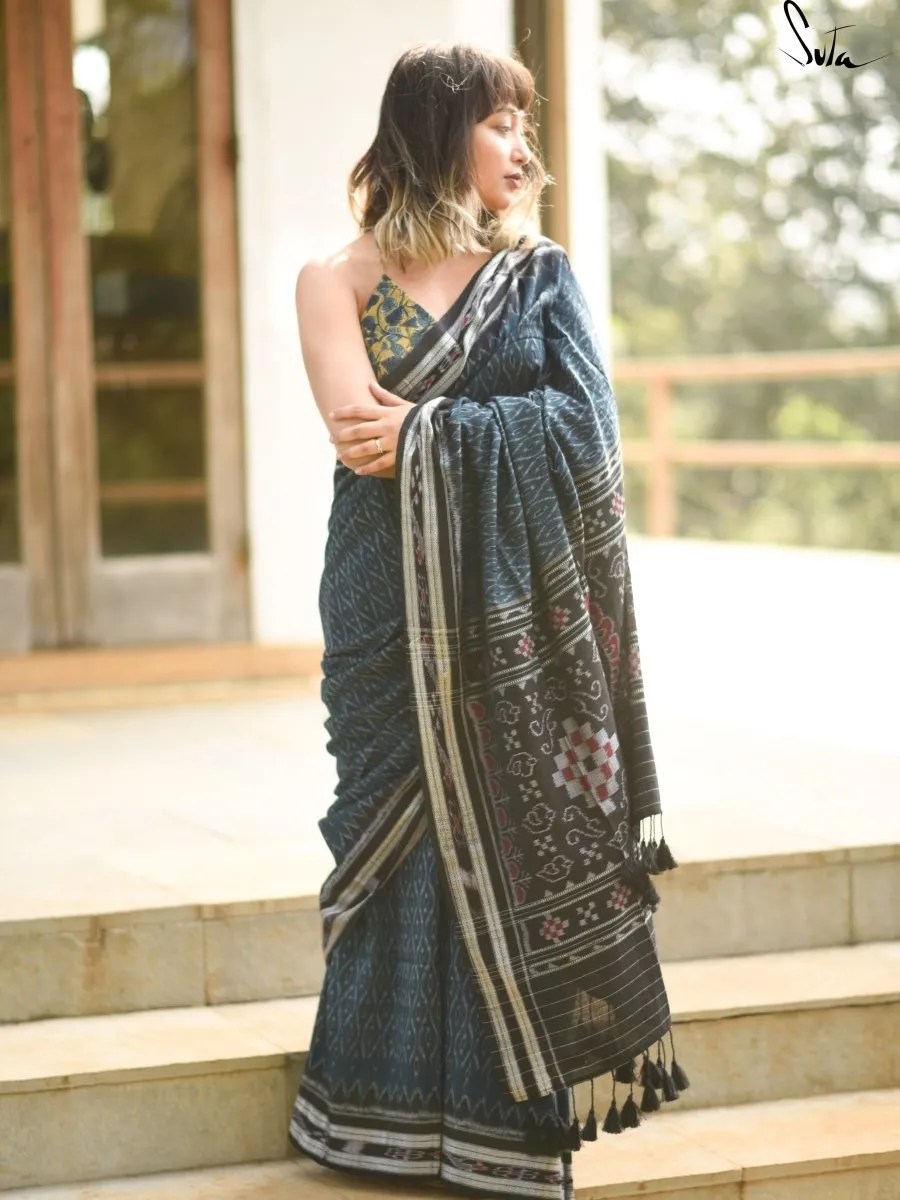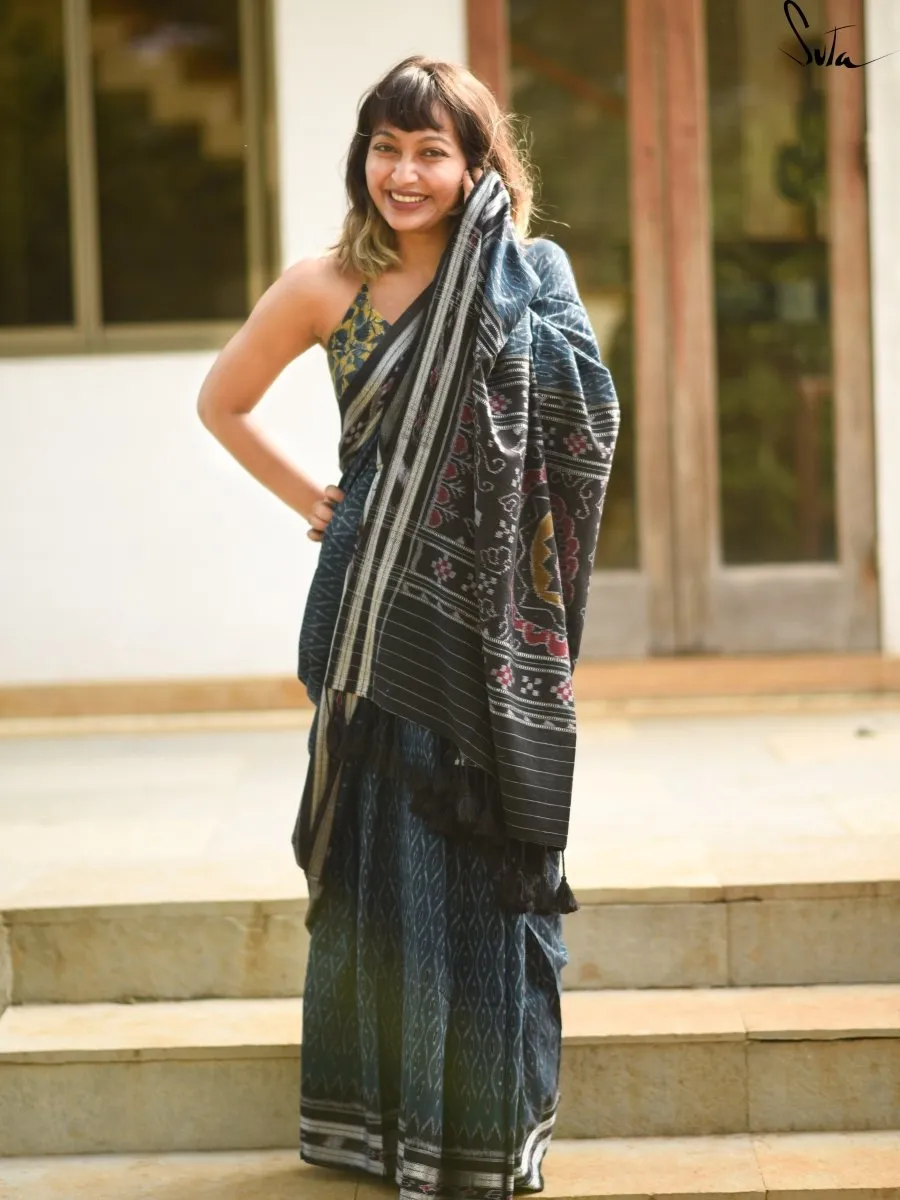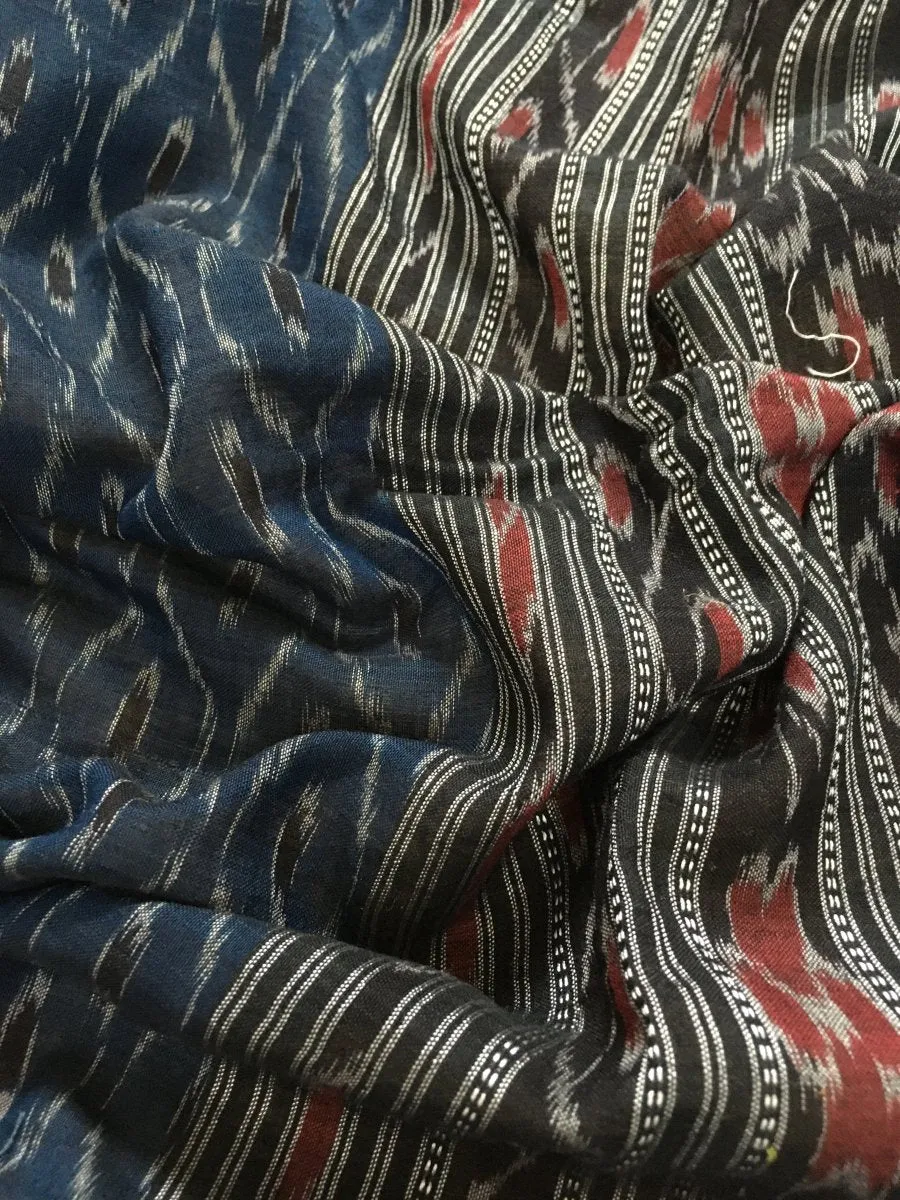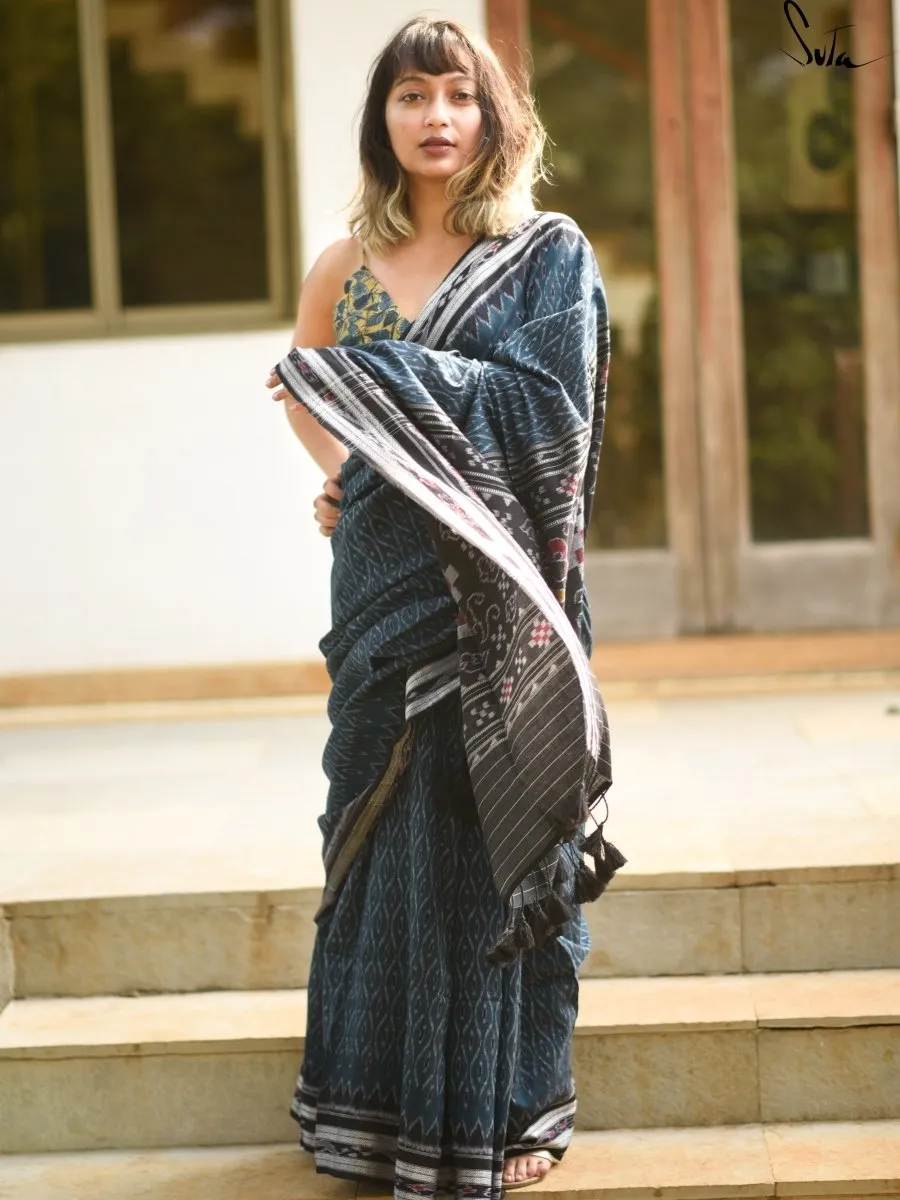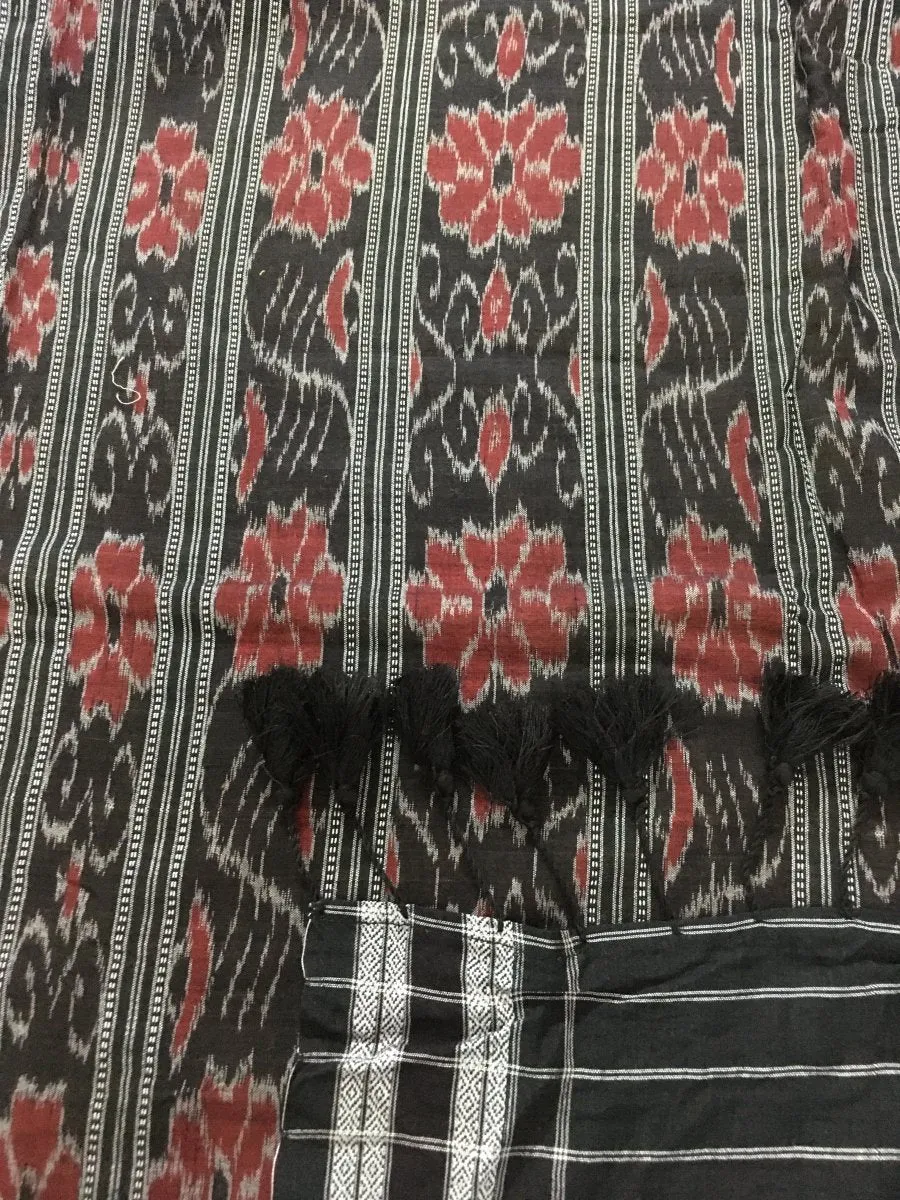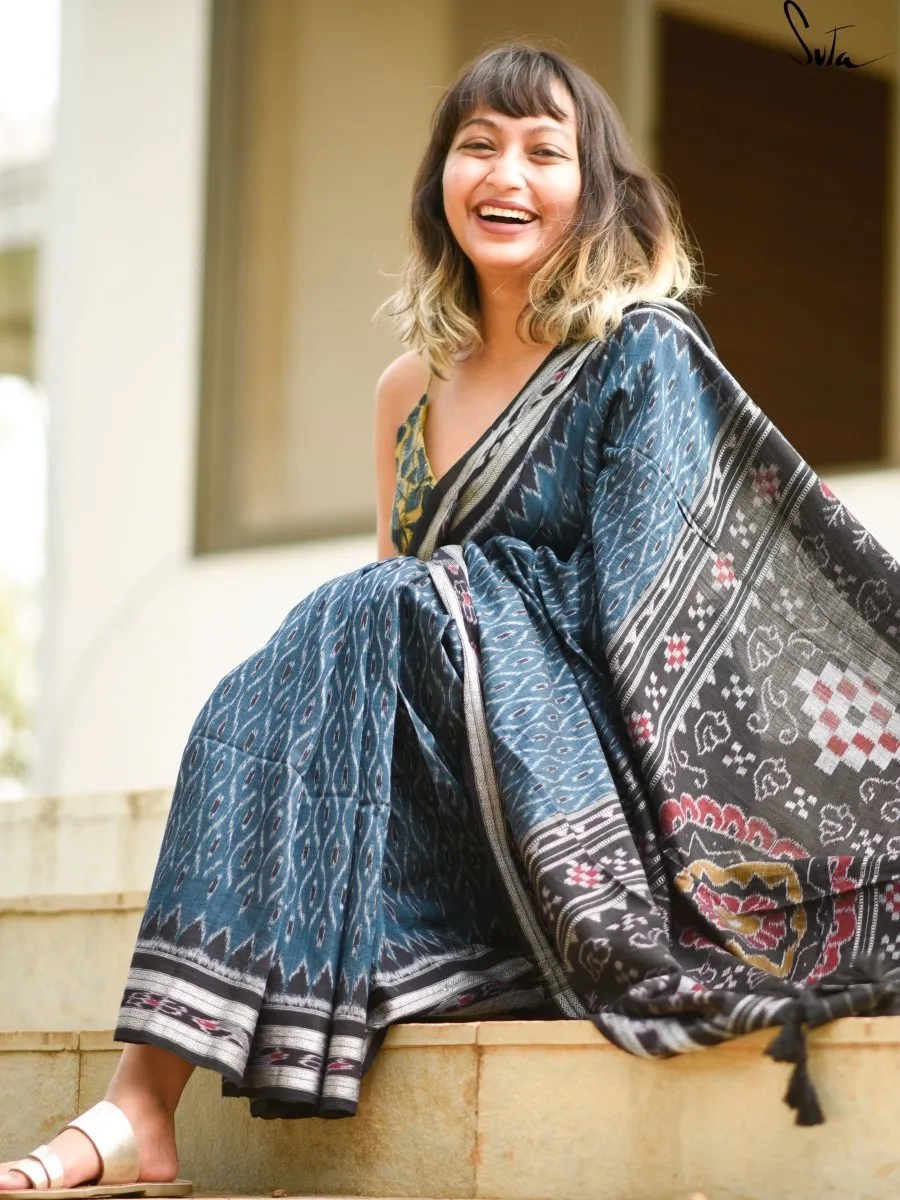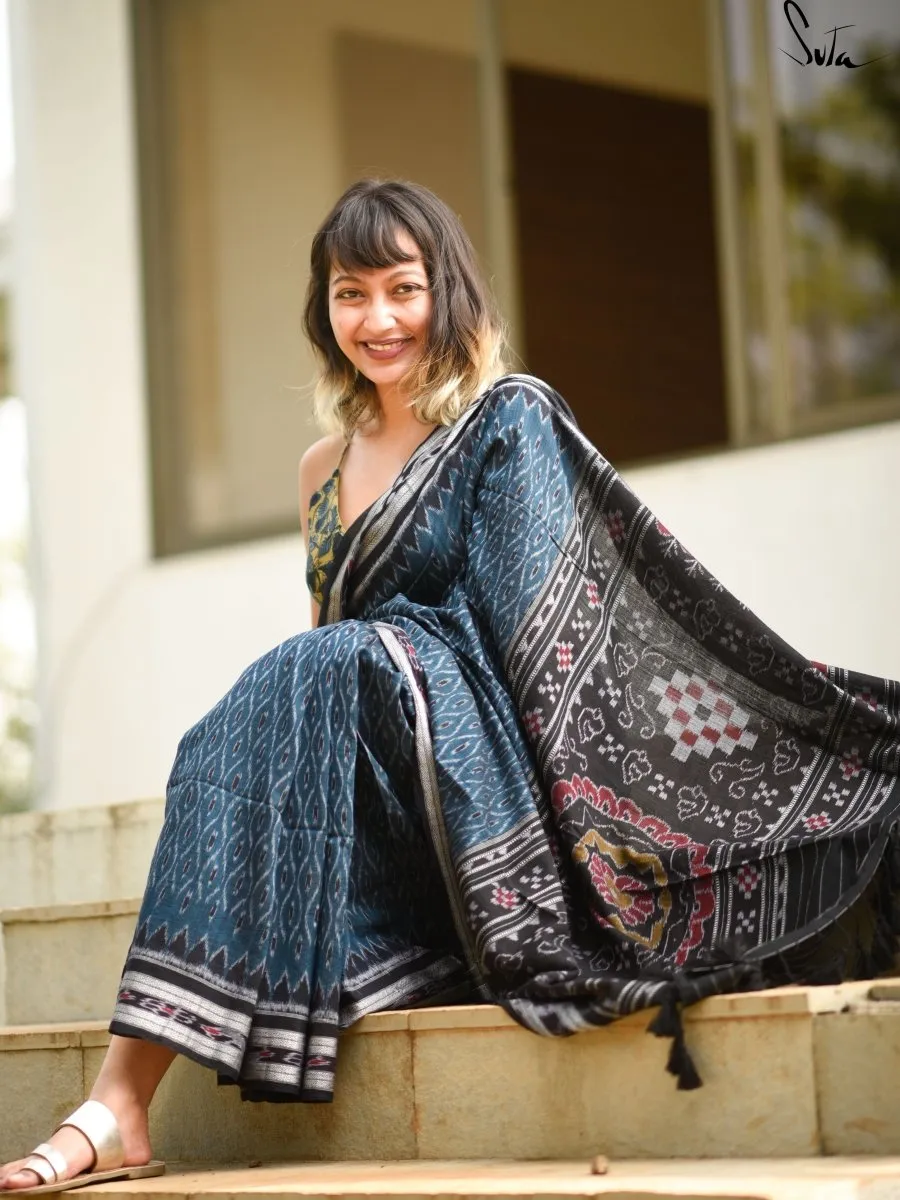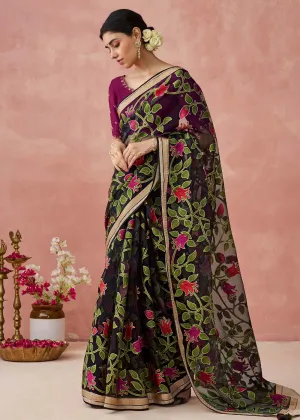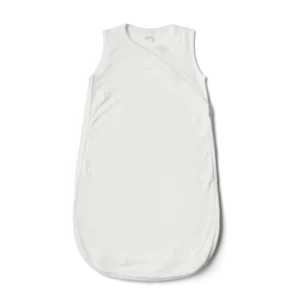Details
Length: 5.5 meters ; Width: 47 inches
Blouse Piece: No
Wash Care:
1. Hand wash separately in cold water and salt
2. Don't soak it in water for more than 5 minutes
3. Low iron
Blouse: Ta, the model is wearing a blouse Leafy Raina
Fabric: Handloom Ikat Cotton
Story
From close quarters it looked like they were running at high-speed to nowhere-land. Their energy was too much to take for those on this planet. Yet, they shone like diamonds and this was undeniable. They had direction, even if it couldn’t be deciphered. These were shooting stars on Earth. After all, the stardust was in them too!
This blue handloom Ikat cotton saree is just what your wardrobe needs!
Description
Ikat is an art of resist-dyeing where the yarn is coated with resistive materials in specific patterns and then dyed before weaving the fabric. The process of applying dye-resist and dyeing is repeated multiple times to create exquisite patterns. Though the origin of Ikat is not clearly pin-pointed by historians, it is believed that civilisations all over the world have practiced this art or closely related techniques since ancient times.
The handloom cotton is a type of fabric that is woven using hand operated looms. Two sets of interlacing yarns, the warp (length) and weft (width), are woven on a mechanised loom operated by weavers. These looms do not use electricity. Human handling lends the fabrics a unique feel and renders the fabrics more value. The resultant fabric is softer, more durable and much more comfortable than machine-made fabrics. Handloom cotton is more breathable and thus feels lighter in summers and provides more insulation in winters. The dyeing process also becomes easier for handloom cotton as the colour penetration is substantially more. Hues are absorbed better thus look resplendent on handloom cotton.
The traditional handwoven Ikat saree originally comes from Odisha and their unique craftsmanship. This art of hand weaving is labour intensive and takes a longer time. But, the beauty it adds to the fabric is priceless. Choosing handloom cotton supports the rich weaving heritage of India and lets the weavers carry on the precious Sambhalpuri art-form that's has been originated from Odisha to the future generations as well.




